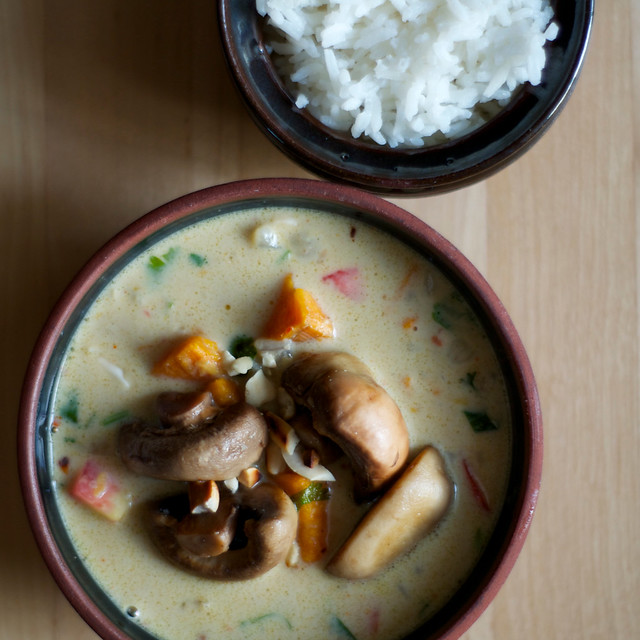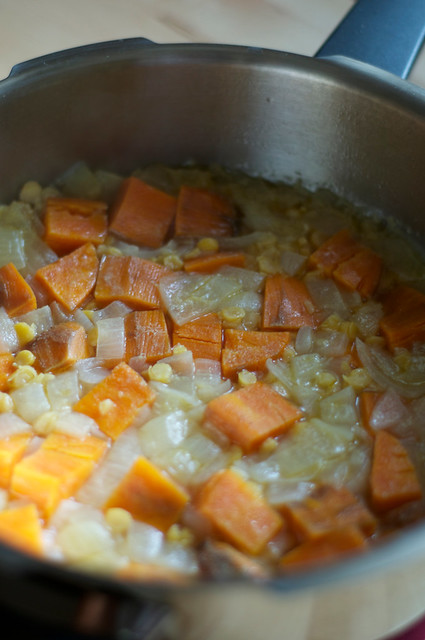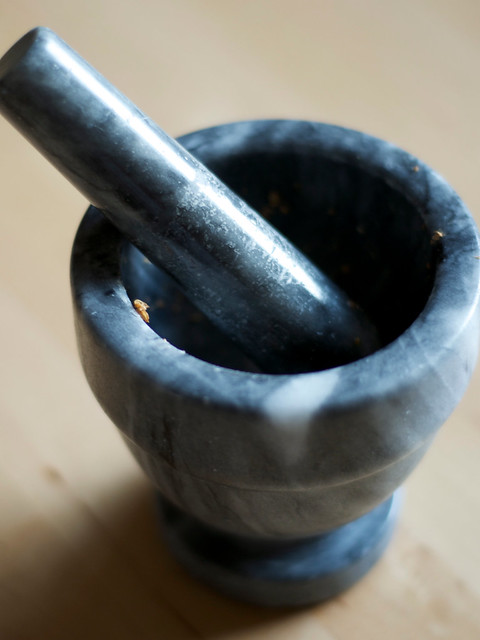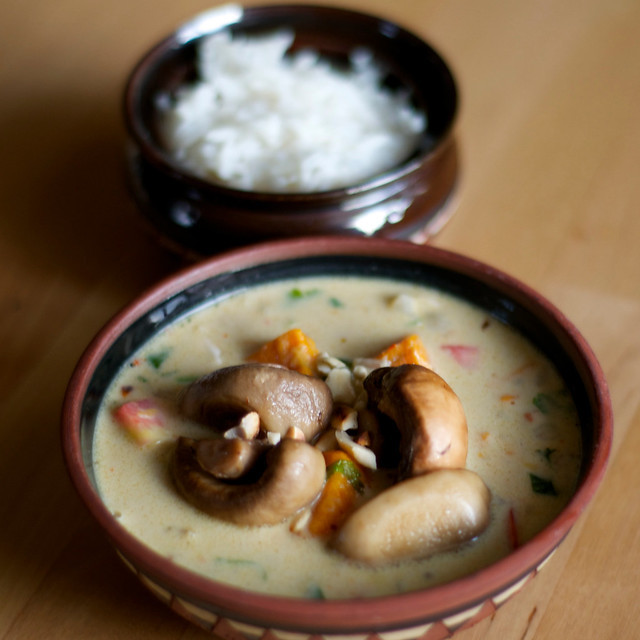



I bought a pressure cooker. It's a second generation six-piece Kuhn Rikon Duromatic. It came in two different sizes, with a lid that can be shared between the two, another glass lid for cooking, and a trivet for steaming. Simply put, pressure cookers save time. Second generation pressure cookers are designed to be safer because they are supposed to be constructed with at least two or three safety releases, and they are designed to indicate clearly when the cooker has come to low or high pressure. There is no loud hissing. In older, or first generation, pressure cookers they usually have a jiggle top which releases pressure in loud hisses after reaching pressure.
Laura, of the Hip Pressure Cooking blog, has written extensive reviews on different types of pressure cookers, and I found her detailed, and highly knowledgeable reviews, are what sold me on the Kuhn Rikon. Her recipes are modern, adaptable, and reproducible. She has basic pressure cooking tutorials that are easy to follow, and her site has created a community of modern day pressure cooker enthusiasts.
Over the past few weeks, a personal barrier I had to using my new pressure cooker was relearning how to adapt recipes. I found that after a few weeks of trial and error, the learning curve for seasoned cooks is fast. The learning curve for beginner and novice cooks (the hubs is categorized in this category) is also fast. Our pressure cooker came with a cookbook which is a great reference guide. The hubs started out with potatoes, moved to cooking beans a few times, and made a rice pilaf, and a Mediterranean couscous. To vegetarians, the cooking time for beans and lentils will be slashed in half. This, and this reason alone, is one of the very essential reasons to own one, and it explains why pressure cookers are a sustaining life force in Indian households.
Channa Dhal Mushroom Massaman Curry
Adapted from Food and Wine
Yield: 4 servings
This curry is delicious. I think the ingredients list is a bit daunting, but the outcome is marvelous. With a pressure cooker you really save time because you can utilize the 12 minutes that the cooker is cooking to prepare other things and clean up. The sweet potatoes melt into the dish, the channa dhal bulks up the curry, and replaces chicken in the original recipe. I have added mushrooms, channa dhal, and coriander, and replaced water for the broth.
Ingredients for curry paste:
1" of ginger
2 cloves garlic
1/8 tsp salt
1 tsp Chinese five-spice powder
1 tsp cumin, ground
1 tsp coriander, ground
1/2 tsp turmeric
1/2 tsp red chili flakes
1 can coconut milk
Ingredients for curry:
2 tbsp peanut oil, divided
1/4 cup channa dhal or split yellow lentils, soaked in 1 cup of water*
1 onion
1 sweet potato, peeled and cubed into 1" chunks
3/4 cup water
1 package of mushrooms, stems removed and quartered
1-2 tsp rice wine vinegar, optional
1 medium tomato
1/4 cup cilantro, chopped
1/4 cup peanuts, chopped
4 cups cooked white long-grain rice
Directions:
- Soak the channa dhal in 1 cup of water. Set aside.
- The next step will be making a curry paste. You have three options 1) use a mortar and pestle, 2) use a food processor, 3) finely chop with a knife. I used the mortar and pestle because you end up with about 2-3 tbsp of curry paste a small amount for the food processor. In a mortar and pestle, pound together the garlic with the salt until it is a coarse paste. Remove this to a small mixing bowl that can hold 2 cups worth. Add the ginger and pound together. Scrape this into the bowl. Add the remaining spices and the coconut milk to the bowl and stir to combine. Set aside.
- In a 4 quart pressure cooker (my small pressure fry pan is < 3 quarts) heat up 1 tbsp oil over medium high heat. Once hot, sauté the onions for 3 minutes.
- Add the sweet potatoes, stir together, and then add in the channa dhal along with the water. Add 3/4 cup of water. Do not add salt. Bring the mixture to a simmer and then close the lid. Bring the pressure cooker to the first red ring and then cook over low pressure for 12 minutes. Use the natural release method.
- Heat up the remaining 1 tbsp of peanut oil over medium-high heat in a cast iron or non-stick skillet. Once hot, add in the mushrooms and sauté about 7-10 minutes. Sprinkle the rice wine vinegar on top, cook 3 more minutes and cut the heat and remove the pan from the heat.
- Open up the pressure cooker and put it back on the heat. Stir in the coconut milk curry mixture, add the tomatoes and bring to a simmer. This should only take a few minutes.
- Garnish with peanuts and cilantro and serve immediately, preferably over cooked white rice.
*Note: soaking the channa dhal is not necessary, but I find that it cooks faster.

This looks delicious! I'll have to try it. I make this Thai coconut milk and mushroom curry with masoor dhal, and this recipe reminded me of that. Yum!
ReplyDeleteAlso, thanks for the info on the second generation pressure cookers, I don't know if I want to change from my trusty first generation cooker but I'll look the new ones up at least.
Jai